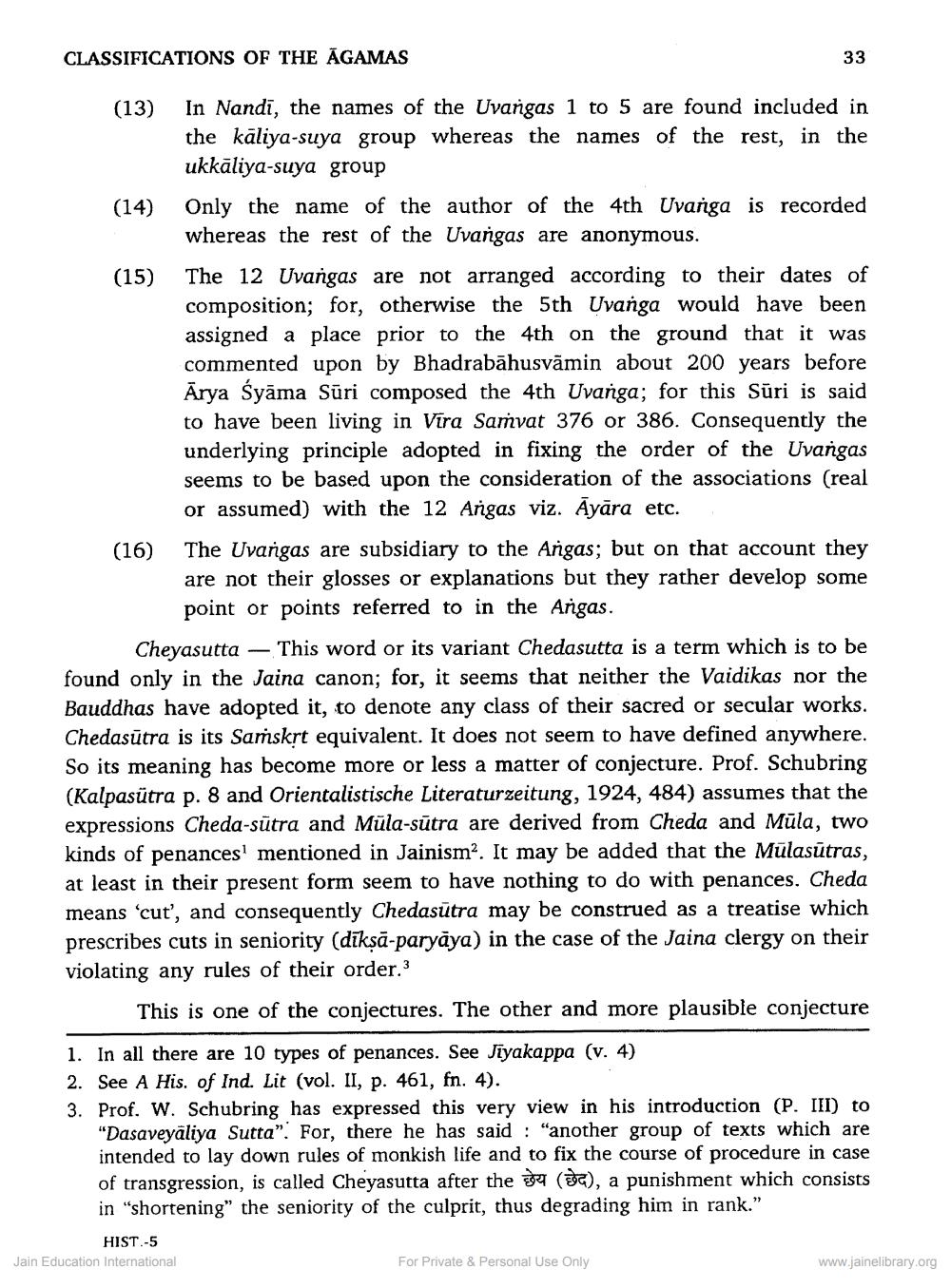________________
CLASSIFICATIONS OF THE AGAMAS
(13) In Nandi, the names of the Uvargas 1 to 5 are found included in the kaliya-suya group whereas the names of the rest, in the ukkäliya-suya group
(14)
(15)
33
Only the name of the author of the 4th Uvanga is recorded whereas the rest of the Uvangas are anonymous.
The 12 Uvangas are not arranged according to their dates of composition; for, otherwise the 5th Uvanga would have been assigned a place prior to the 4th on the ground that it was commented upon by Bhadrabāhusvāmin about 200 years before Arya Syama Süri composed the 4th Uvanga; for this Süri is said to have been living in Vira Samvat 376 or 386. Consequently the underlying principle adopted in fixing the order of the Uvangas seems to be based upon the consideration of the associations (real or assumed) with the 12 Argas viz. Ayāra etc.
(16) The Uvargas are subsidiary to the Argas; but on that account they are not their glosses or explanations but they rather develop some point or points referred to in the Angas.
HIST.-5 Jain Education International
Cheyasutta - This word or its variant Chedasutta is a term which is to be found only in the Jaina canon; for, it seems that neither the Vaidikas nor the Bauddhas have adopted it, to denote any class of their sacred or secular works. Chedasūtra is its Samskṛt equivalent. It does not seem to have defined anywhere. So its meaning has become more or less a matter of conjecture. Prof. Schubring (Kalpasūtra p. 8 and Orientalistische Literaturzeitung, 1924, 484) assumes that the expressions Cheda-sutra and Müla-sutra are derived from Cheda and Müla, two kinds of penances' mentioned in Jainism2. It may be added that the Mulasūtras, at least in their present form seem to have nothing to do with penances. Cheda means 'cut', and consequently Chedasutra may be construed as a treatise which prescribes cuts in seniority (diksä-paryaya) in the case of the Jaina clergy on their violating any rules of their order."
This is one of the conjectures. The other and more plausible conjecture
1. In all there are 10 types of penances. See Jiyakappa (v. 4)
2. See A His. of Ind. Lit (vol. II, p. 461, fn. 4).
3. Prof. W. Schubring has expressed this very view in his introduction (P. III) to "Dasaveyaliya Sutta". For, there he has said: "another group of texts which are intended to lay down rules of monkish life and to fix the course of procedure in case of transgression, is called Cheyasutta after the (e), a punishment which consists in "shortening" the seniority of the culprit, thus degrading him in rank."
For Private & Personal Use Only
www.jainelibrary.org




